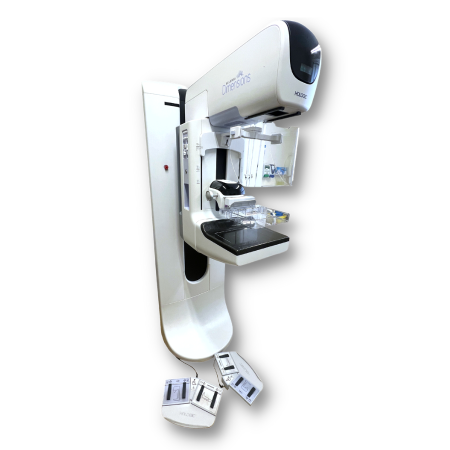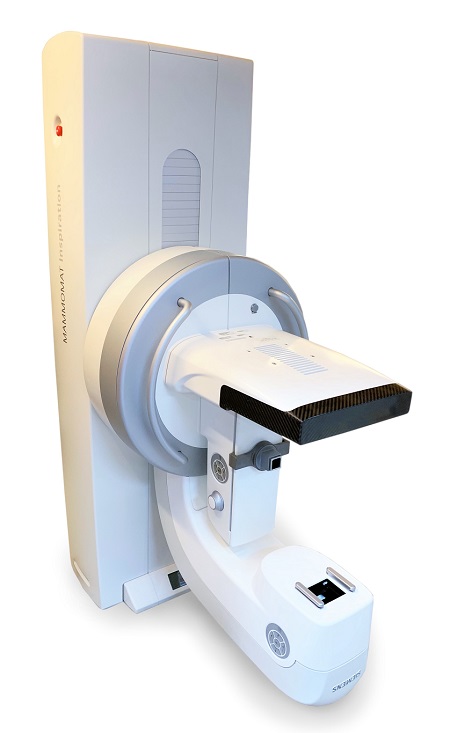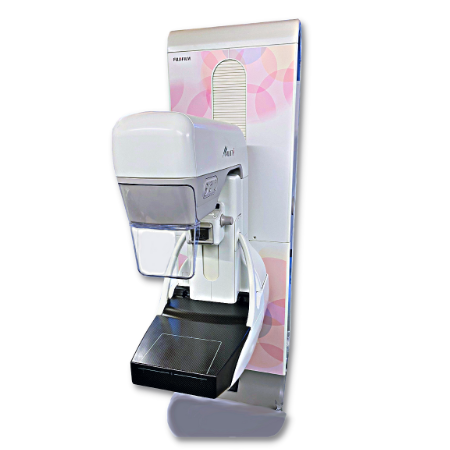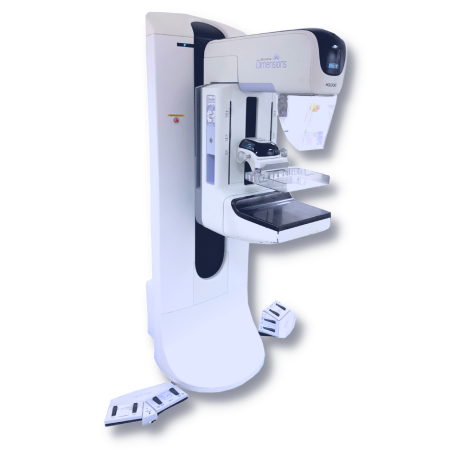3D Mammography Machine – 3D Mammography Pros and Cons
This article has been updated 28-03-2025
In this article, we explore the pros and cons of 3D mammography and what to expect when acquiring a 3D mammography machine.
Also known as tomosynthesis or tomo mammography, this technology is among the most advanced and widely used in today’s mammography market, and for good reason.
But what exactly is tomo mammography?
In the next section, we will introduce you to it.
What is Tomo on a Mammogram?
Tomosynthesis is a special type of mammography that uses low dose X-rays obtained at different angles and computer reconstructions to produce three-dimensional images of the breast. Rather than the standard 2D images.
Therefore, tomosynthesis can be also called 3D mammography or digital breast tomosynthesis (DBT).
3D tomosynthesis mammography machines serve to assist better in early detection and diagnosis of breast cancer, when it is most treatable.
If you prefer, you can sign up for our e-mail course, which will walk you through the main points to consider when purchasing a mammography system.
That will also give you access to an e-book about mammography machines.
Join the mammography mail course
If you’re looking for a simple answer to pros and cons of 3D mammography machine, then here it is:
So, what are the pros and cons of 3D mammography machine?
Pros: 3D mammography (tomosynthesis) offers better detection of small lesions and breast cancer, reduces false positives, and provides clearer images, especially in dense breast tissue. It also improves accuracy in determining the size, shape, and location of abnormalities.
Cons: 3D mammography is more expensive, and has higher maintenance costs compared to traditional mammography. Variations in image quality may occur due to the movement of the X-ray tube.
And if you want more details, continue reading.
Main Differences of Conventional and 3D Mammography Machine
Digital mammography and 3D tomosynthesis mammography machines are almost the same, and are used to detect abnormal changes in breast tissues.
To this day, mammography is the best tool for breast cancer screening.
However, it may not detect all breast cancer.
And thus, the tomosynthesis option has been developed for better outcomes.
Regular mammography obtain standard 2D images, while tomosynthesis utilize movement to gain 3D pictures, in a similar way as a CT scanner.
However, tomosynthesis models can also aquire 2D images.
Breast imaging is performed while the system compresses the breast between a clear plastic paddle and the imaging detector.
Compression may cause overlapping breast tissue, hiding abnormal tissues or making normal tissues appear abnormal.
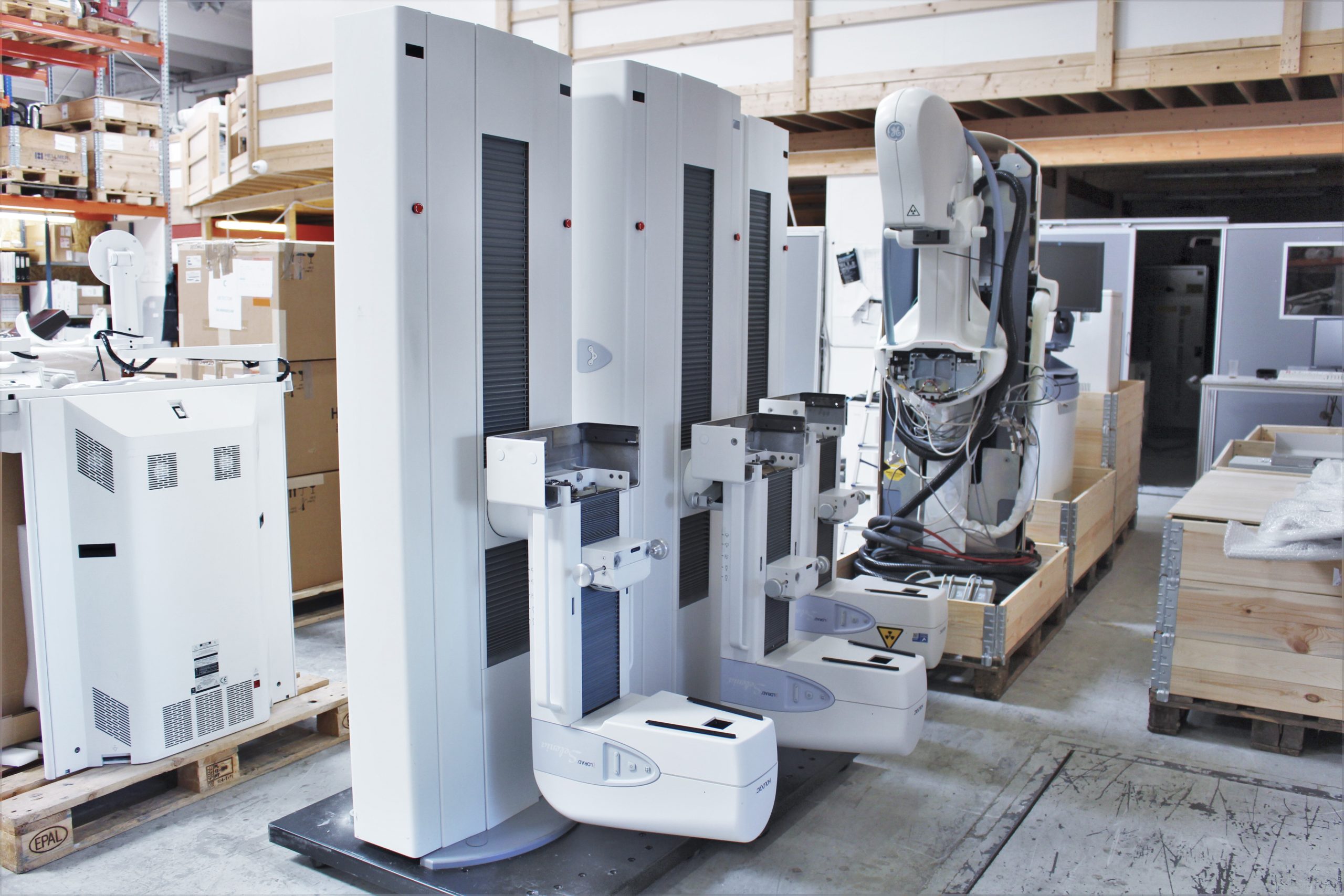
In tomosynthesis mammography, the X-ray tube moves circularly around the compressed breast, capturing several images of each breast from different angles. This takes less than 10 seconds.
The data acquired is sent to a computer that produces a focused three-dimensional image of the breast.
The three-dimensional imaging helps minimize the tissue overlap that can hide tissue changes, or can make it hard to distinguish normal overlapping breast tissue from abnormalities.
3D Mammography Pros and Cons
But finally, let’s take a detailed look at the pros and cons of 3D mammography machines.
Advantages of Tomosynthesis Mammography
What are the Advantages of Breast Tomosynthesis in Mammography?
Overall, tomosynthesis is considered to be a more advanced and detailed imaging technique than a conventional mammogram.
As tomosynthesis mammography can look at multiple breast layers in a 3D image, it overcomes some of the limitations of the conventional mammograms. For instance:
- It reduces false positive findings.
- 3D imaging enables detection of small lesions and other signs of breast cancer earlier than the conventional mammogram. And even earlier than any symptoms arise.
- It has a better accuracy in determining the size, shape as well as the location of breast abnormalities.
Additionally, in the 3D tomosynthesis mammography machines, there is a higher probability of detecting multiple breast tumors.
Disadvantages of Tomosynthesis Mammography
There are a few downsides of using tomosynthesis:
- With more images of each breast, there is more exposure to radiation. Nevertheless, the radiation is still minimal and within safe radiation levels for FDA approved mammography images.
- Furthermore, the arc of movement of the X-ray tube can vary, which may cause variations in the images.
- Regarding prices, you can expect that models with tomosynthesis are going to be more expensive.
- Moreover, the maintenance costs may be higher as well.
As you can see, tomosynthesis mammos have a few drawbacks. And if your budget is limited, you will be more than happy with a regular mammo system.
Remember that regular mammography machines are powerful and still are the standard in breast imaging.
3D Tomosynthesis Mammography Machines
What 3D Mammography Machines do Manufacturers Offer?
Now that we have discussed the main pros and cons of 3D tomosynthesis mammography machines. Let us go over what 3D mammography machines the different manufacturers offer.
You can get 3D tomosynthesis mammography machines from top brands like Hologic, GE, Siemens, and Fuji.
Hologic 3D Mammography Machines
Hologic’s Selenia Dimensions with tomosynthesis is one of the more popular machines on the used market especially. It is far stronger than its 2D counterpart, the Selenia Dimensions 2D.
You may have heard Hologic refer to Genius 3D mammography when talking about the Selenia Dimensions with tomosynthesis.
But, what is a Genius 3D mammography machine?
Selenia Dimensions uses C-view technology which is meant to support what Hologic calls the Genius 3D mammography exam. It is what allows you to do tomosynthesis breast scans.
The feature further enables you to get high quality 3D images, but at a lower dose exposure.
Also, the Genius 3D exam feature provides you with images that are superior to traditional 2D images.
Overall, these Hologic 3D mammography machines are very powerful.
GE 3D Mammography Machines
GE is another big player on the 3D mammography market. Their GE Senographe Essential TOMO is a 3D tomosynthesis machine we often have in stock.
The Essential 3D is a strong performer with its Tomo technology. This GE 3D mammography machine offers you a dual-track X-ray tube. These are designed to ensure much more precise and clear imaging.The GE Senographe Essential with Tomo makes it easy to accommodate various clinical requirements that may appear.
Siemens 3D Mammography Machines
Siemens also provides many amazing systems. One of them is the Siemens Mammomat Inspiration 3D. As the name suggests, this is a full 3D tomosynthesis mammography machine.
The Inspiration 3D is at the forefront when it comes to the use of breast tomosynthesis technology, or Tomo. It helps you confidently detect even the smallest abnormalities.
With a Siemens 3D mammography machine like this, you can be sure that your imaging quality will be increased.
Fuji 3D Mammography Machines
Fuji came out with their reliable Fuji Amulet Innovality 3D mammography machine. It has become a staple on the used market.
With a Fuji 3D mammography machine like the Innovality 3D, you get a highly advanced system. Fast image intervals of only 15 seconds and the use of a-Se flat panel provides you with incredible image quality. And a low dose exposure.
Also, the Innovality 3D increases your workflow efficiency.
Sum Up – 3D Mammography Pros and Cons
As we mentioned at the beginning, tomosynthesis mammograms are becoming increasingly popular in the secondary medical equipment market.
But, what are the advantages and disadvantages of 2D vs. 3D mammography?
Get an easy overview of the main pros and cons below:

What are the advantages of mammography machines with tomosynthesis?
One advantage of tomosynthesis mammography is that 3D imaging provides better results when screening dense breast and earlier detection of breast cancer.
What are the disadvantages of mammography machines with tomosynthesis?
A disadvantage of tomosynthesis mammography, it that the breast is exposed to more radiation during tomosynthesis, though it remains within safe radiation levels.
Furthermore, mammography machines with tomosynthesis are more expensive and due to their higher complexity, they may come with higher maintenance cost.
Finally, it is important to remember that tomosynthesis is a special function. The system has to be a 3D system from factory, and even though you can get it without the software for tomosynthesis, the original system has to be a 3D model in order to get the software later.
You can learn about other common add-ons for mammography machine in our Mammography Machine Accessories Guide.
For any questions or requests, feel free to contact us at sales@lbnmedical.com.
And, if you would like to prepare for your next mammo purchase, you can sign up for our new mail course. It will walk you through tomosynthesis, price ranges, model examples, and much more.
You can also calculate the profitability of your 3D mammography machine project with our profit and break-even calculator.
Looking for a 3D Mammography Machine?
Reach out to us with any questions or requests – our team is ready to assist you.
